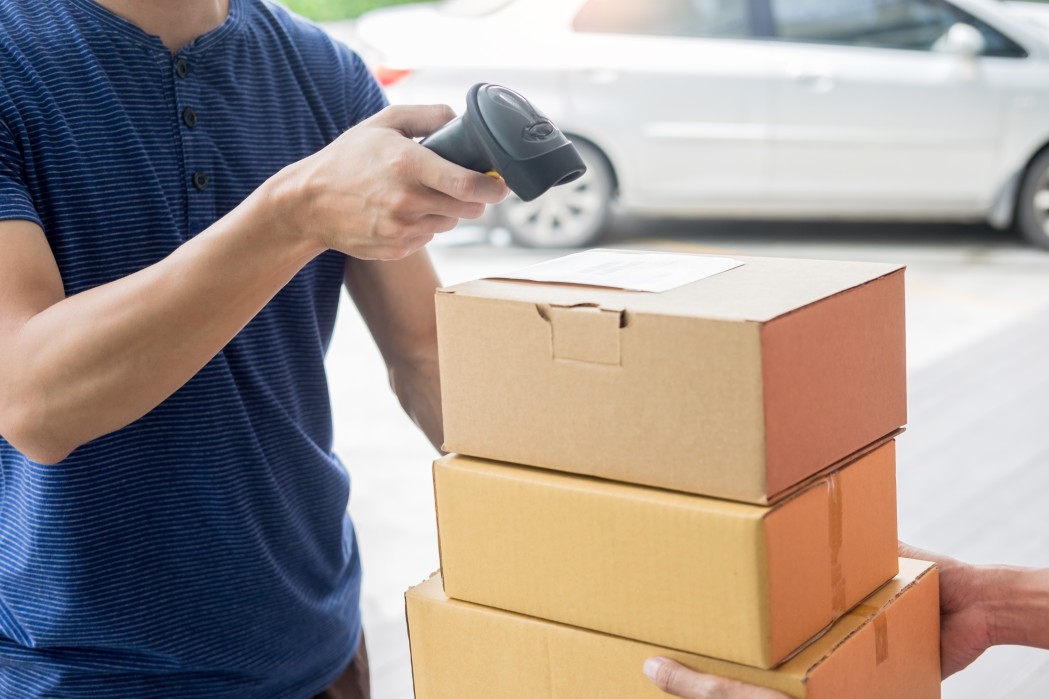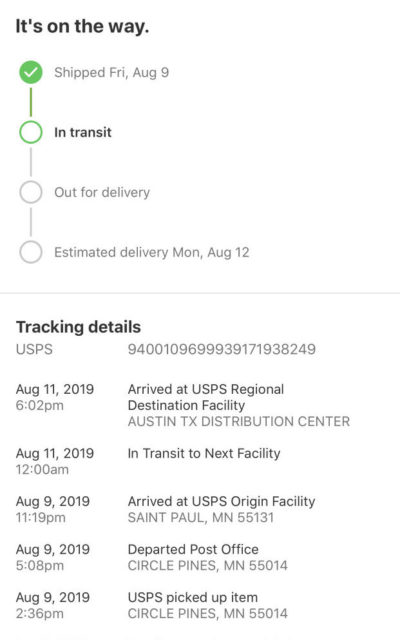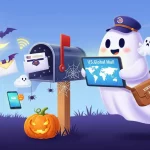USPS tracking has definitely come a long way over the last 20 or 30 years. What used to be a somewhat unreliable and inaccurate service has improved by leaps and bounds, becoming just as accurate, as consistent, and as useful as the tracking data provided by companies like FedEx and UPS. Not only have the tracking improvements helped customers get a better feel for when their packages are going to arrive (and where they are at any one particular moment), but it’s improved USPS logistics as well. This speeds up delivery times and makes life working for the post office a lot easier.
Below we highlight (almost) everything you need to know about USPS tracking. We cover how it works, what your tracking number is going to look like, where you can find your tracking information, how you can use this information, and so much more. You’ll be a USPS tracking info master by the time you finish this quick guide. Ready to jump in? Let’s do it!
![]()
USPS Tracking 101 – Everything You Need to Know
Like most other tracking solutions from the big shipping organizations, USPS tracking service is considered “end to end logistics tracking” – and is available for almost all domestic mail carrier by the United States Postal Service. This includes mail being sent to Alaska and Hawaii, mail being sent to Puerto Rico and Guam, mail being sent to the US Virgin Islands and other territories, as well as Army Post Offices, Fleet Post Offices, and Diplomatic Post Offices. At the end of the day, if the USPS is going to handle your mail, packages, and parcels the odds are very good that tracking information is available.
How Does USPS Tracking Work?
The way that tracking information works is also pretty simple and straightforward. Every time the USPS receives a new piece of mail to handle it is given a 100% unique to it tracking code that is also immediately uploaded into the USPS database. A barcode is attached to the package as well (with both the tracking number and the barcode right next to one another on a shipping label), making it easier for USPS employees to scan and update it as it moves through the system.
The initial scan is made at the origination office for the package (usually your local post office). Every time your package arrives at a new destination or departs a destination along its journey it’s going to get scanned and updated as well. Whenever that barcode is scanned the information is updated across the USPS database and infrastructure. This helps you to see (and almost real time) exactly what’s going on with your package, where it’s currently located, and a solid estimate of when it’s going to arrive at its ultimate destination.
Some of the tracking information from the USPS is included with the cost of premium shipping options, though sometimes you’ll have to pony up a bit of extra cash to cover tracking as an add on. At the end of the day, though, tracking information (even if you have to pay extra) is incredibly valuable and won’t break your bank account. If you have the opportunity and the budget to do so, it’s always a good idea to add it to any USPS mail piece, package, or parcel you want to track that doesn’t otherwise have this service included.

What Will My Tracking Number Look Like?
The overwhelming majority of USPS tracking numbers are going to be 22 numbers long, though some tracking codes are only going to be 10 numbers long, or 13 characters long with two letters at the front and the back of the code.
The USPS has different tracking number styles for different types of mail moving through their system. USPS general tracking, for example, will usually be expressed as 9400 1000 0000 0000 00. USPS Priority Mail tracking, on the other hand, might look like this 9205 5000 0000 0000 00, where Certified Mail may look like 9407 3000 0000 0000 00. Global Express Guaranteed will usually be a more truncated tracking number, something like 82 000 000 00. Priority Mail Express International is going to have a truncated tracking number as well as, sort of like EC 000 000 000 US.
Obviously, each and every one of the zeros that were included in those tracking codes would be changed to completely different digits. But the general principle and outline is the same across the board. A quick way to know which mail service the USPS is using to get you your package is to look at the first four digits and the last two digits of your tracking information. That’ll usually shine a light on the kind of tracking you’re dealing with.
Where Will I Find My Tracking Number?
Because your tracking information is so important you should be able to find it on a couple of different places, including directly on the mail piece or package that you are sending through the USPS infrastructure as well. For starters, you’re going to have your tracking information printed pretty prominently on the receipt that you get for your package, parcel, or piece of mail when you’re at the post office. This shipping receipt is going to make it very obvious what your tracking information is, but it’s also (usually) going to include the same barcode that your shipping label has, too. This lets you use smart phone applications to scan your label and check your tracking information if you don’t feel like punching in the longer digits directly into the USPS tracking platform or something like Google.
On top of that, you’re going to almost always get a confirmation email from the USPS that includes your shipping receipt, shipping information, and your tracking code. Not only will you be able to copy and paste that tracking code into the USPS tracking platform or a search engine like Google to get the answers you’re after, you’ll also be able to track your package inside of that email by using the follow-on links provided by USPS.
Finally, there’s a “peel off” portion of your USPS Shipping Label that includes a “your copy” version of your tracking label. You’ll want to separate this from the shipping label you attached to your mail piece, package, or parcel before you drop it in the mail and send it on its way. All in all, there are plenty of places you’ll be able to find your tracking information. It still isn’t a bad idea to take a quick snapshot of your tracking info with your phone before you drop your package off, too. That’ll just double confirm that you have the information you need when you go to run your tracking data.
![]()
How Can I Use My USPS Tracking Info?
Taking advantage of your tracking information is generally very easy. You have a couple of different options to work with here, too. For starters, you can simply bring a copy of your tracking information or your shipping label directly to a local post office (or any post office, really) and asked them to look up your package information. They’ll be able to do this in about three seconds flat and it’s a service that they provide customers each and every day probably millions and millions of times throughout the week.
Not only will you get general overview information about where your package is located right then, but you also get more in-depth information about your package thanks to the fact that the number is being run through the USPS internal system. You’ll certainly walk away with a much better idea and estimate of when your package is going to arrive.
At the same time, if you don’t feel like visiting the post office directly you can always drop them a line on the phone – either calling your post office or the main post office customer service number (1-800-222-1811) – to get more details. They’ll ask for your name, address, and tracking info just to confirm everything is good to go and then they’ll be able to tell you what’s going on with your package. You can also kick over a text message to 28777 with your tracking number as the sole contents of the message. The USPS automated system will read that information and text you back about your package inside of maybe 30 to 60 seconds after receiving your data.
A visit to the USPS website will give you access to their tracking platform, available 100% free of charge on a 24/7 basis. Just punch your tracking information into the tool and you are off to the races! Most folks have discovered that they can also simply copy and paste or type their tracking information into the address bar of all major browsers and Google will run your tracking data for you. It’s just another way to get a quick answer about location data for your package.
Finally, the USPS has a mobile application available for iOS, Android, and Blackberry mobile devices. You can download these applications free of charge to your phone or tablet and use them to track your packages, parcels, and mail pieces as well.
Breaking Down Common Tracking Status Updates
When you run your tracking information you’re likely to be presented with a couple of different tracking messages and status updates. Understanding them is a big piece of the puzzle to really knowing what’s going on with your package at any one particular point in time.
Here are some of the most common status messages you are likely to get:
Electronic Shipping Info Received – This basically means that the USPS has received electronic notifications about packages that are going to be shipped via USPS but do not physically have those packages in their possession just yet.
Acceptance – This message means that your package has physically been accepted by a postal employee, either at your local post office (or any post office), with a third-party affiliate, or from a letter carrier.
Processed Through Sort Facility – A scan like this means that your package isn’t just sitting at the local post office or distribution network, but that it’s actually been processed through the initial infrastructure and is moving on to the next facility.
In Transit – This particular status update basically let you know that your package is currently on the move, either going to the next step in the USPS infrastructure before finds its way to your doorstep or headed to the final post office before it gets sent out for delivery.
Arrival at Unit – You’ll get this status update as soon as your package arrives at the last post office location it will be in before it’s actually delivered to your doorstep.
Out for Delivery – This is everyone’s favorite USPS tracking status update as it means that your package, your mail, and your parcels are finally on their way to your door. They should be there that day, though the time of day will vary wildly depending on when your individual mail carrier hits your home on their route.
Delivered – This is another message that people like to see when they run their tracking information, as it means that their package, parcel, or piece of mail has been physically delivered to their home. This is a world apart from an attempted delivery or and out for delivery message, as it means that it got its final scan as your mail carrier dropped it at your doorstep.
There are a handful of other messages that the USPS may display when you are running your tracking info (Unknown, Forwarded, Processing Complete, Notice Left, Refused, etc.), but the ones highlighted above are far and away the most common you’ll see on your tracking info.
The beauty of having access to your tracking number is that you can run a tracking query whenever you feel like – as often as you feel like – to keep close tabs on your package or your parcel.
As we highlighted earlier, USPS tracking isn’t exactly “real-time” tracking. But it’s very close, super accurate, and a lot more consistent than it ever was in the past.
Use your tracking info to watch your package move across the state or clear across the country, watching it every step of the way!







